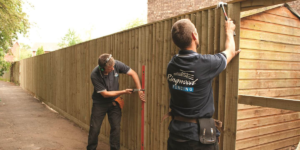Paving is an efficient and fast way to cover large areas of ground quickly, but it is vitally important that new workers understand how to lay pavers properly. Therefore, taking time for training sessions with new workers should always be considered an investment in success. Contact Charleston Paving Solutions now!
Regular maintenance is crucial to any paver system’s long-term performance and should include sweeping surfaces and using mild cleaners to remove dirt. Sealing pavers annually to protect them from weather-induced damage and staining is also highly recommended.

Resiblock Superior Matt is an effective block paving sealer that enhances the aesthetic appeal of residential paved areas. This innovative sealer uses atmospheric moisture to firmly bind particles of sand within joints, protecting against washout, weed penetration, and weathering while being effective against oil infiltration, staining, commercial chemicals, and weathering. Furthermore, its groundbreaking moisture curing system activates the prepolymer components of its product. It completes polymerization through atmospheric moisture activation, resulting in an extremely robust and long-term polymerization process to produce robust finishes that protect paving investments over time.
Durability
Paving provides a sturdy surface to walk on and elevates outdoor spaces, adding both durability and aesthetic value. Available in various materials and can be arranged into patterns to form walkways, driveways and other features – concrete pavers are a popular choice among homeowners, as they are capable of withstanding heavy traffic for decades while brick pavers offer classic touches to outdoor areas – choosing your favorite from various colors and finishes will suit any home!
Durability in paving depends on several factors, including its composition and use. Asphalt pavement typically comprises aggregates combined with bitumen as binding agents to form strong asphalt structures that provide strength and stability; aggregates such as crushed stone or sand provide strength while bitumen acts as glue; additional factors that affect pavement durability include vehicle traffic volume and maintenance frequency.
Maintenance is key to keeping your paved surfaces in good shape for longer. Brushing away any dirt or debris and sealing with an anti-cracking agent are two simple yet essential ways to prolong their usefulness and life span.
Should a paving stone become damaged, replacing it quickly and seamlessly will have no detrimental effect on its surrounding area. Unilock pavers feature an interlocking system which makes this easy; simply remove and level the ground beneath before replacing with new paver without worrying about mismatches in color or texture.
Pavement construction standards account for all forms and volumes of vehicle traffic as well as weather conditions to create durable roads or driveways that remain safe to use. To extend its life and extend its usefulness for longer, seek professional help for routine maintenance and repair – the frequency and quality of these services will determine its lifespan as well as whether replacement will become necessary before its end. By working with a reliable contractor and adhering to maintenance guidelines you can be certain that your pavement remains in great condition for as long as possible.
Appearance
Paving provides an aesthetic finish over concrete slabs, making them more visually pleasing in areas where appearance matters. Furthermore, being more flexible than concrete allows it to accommodate changes to the ground beneath it more readily than monolithic concrete slabs can.
Pathological analysis often reveals a “crazy-paving” appearance due to fine networks of fibrosis present. This finding is frequent among various diseases, such as alveolar proteinosis, adult respiratory distress syndrome, diffuse interstitial lung disease and drug-induced pneumonitis.
Colored pavers fade with time due to a combination of factors (including original shade fading during material manufacture as well as external influences). Sealing can prevent this fading and protect your paving from discoloration; providing an economical and cost-effective means of maintaining its attractiveness.
Maintenance
A clean and well-kept paved surface leaves visitors with an impressive first impression and increases property values, all without much work on the owner’s part to maintain it – simply regular sweeping and periodic rinse-off with cleaning solvents or water will do.
A good paving contractor can assist in developing a preventative maintenance plan to address both minor and major issues before they turn into expensive repairs. This is particularly relevant when dealing with asphalt since its durability often deteriorates faster than concrete; leaving unattended can result in load-bearing capacity being lost, leading to alligator cracking that must be rectified immediately or removed and replaced altogether.
Once alligator cracking becomes severe, a major patching project is required to restore and repair it to its original condition. This may involve major fixes like resurfacing the area completely or even removing and replacing it altogether. Another cost-effective option available to you is full-depth reclamation (FDR), which allows you to utilize every inch of existing pavement before it becomes too damaged for repair.
Concrete, brick, and stone paving require meticulous preparation, such as leveling the site and creating a strong base layer. On the other hand, asphalt paving involves heating and applying layers of material using special equipment, which allows installation more quickly with less disruption – making asphalt an economical choice for parking lot paving projects.
Pavement maintenance should include regular sweeping and cleaning, prompt removal of debris or oil spills, and application of sealants to maintain their surface. In cases of severe damage, repair may include adding new asphalt layers or resurfacing it to restore its original look and load bearing capabilities.
As with any maintenance project, proper safety precautions must be taken in order to protect both workers and pedestrians during maintenance activities. Therefore, scheduling maintenance for off-peak times such as nights and weekends is often preferable in order to limit traffic impact as well as minimize inconvenience for customers and employees alike.







